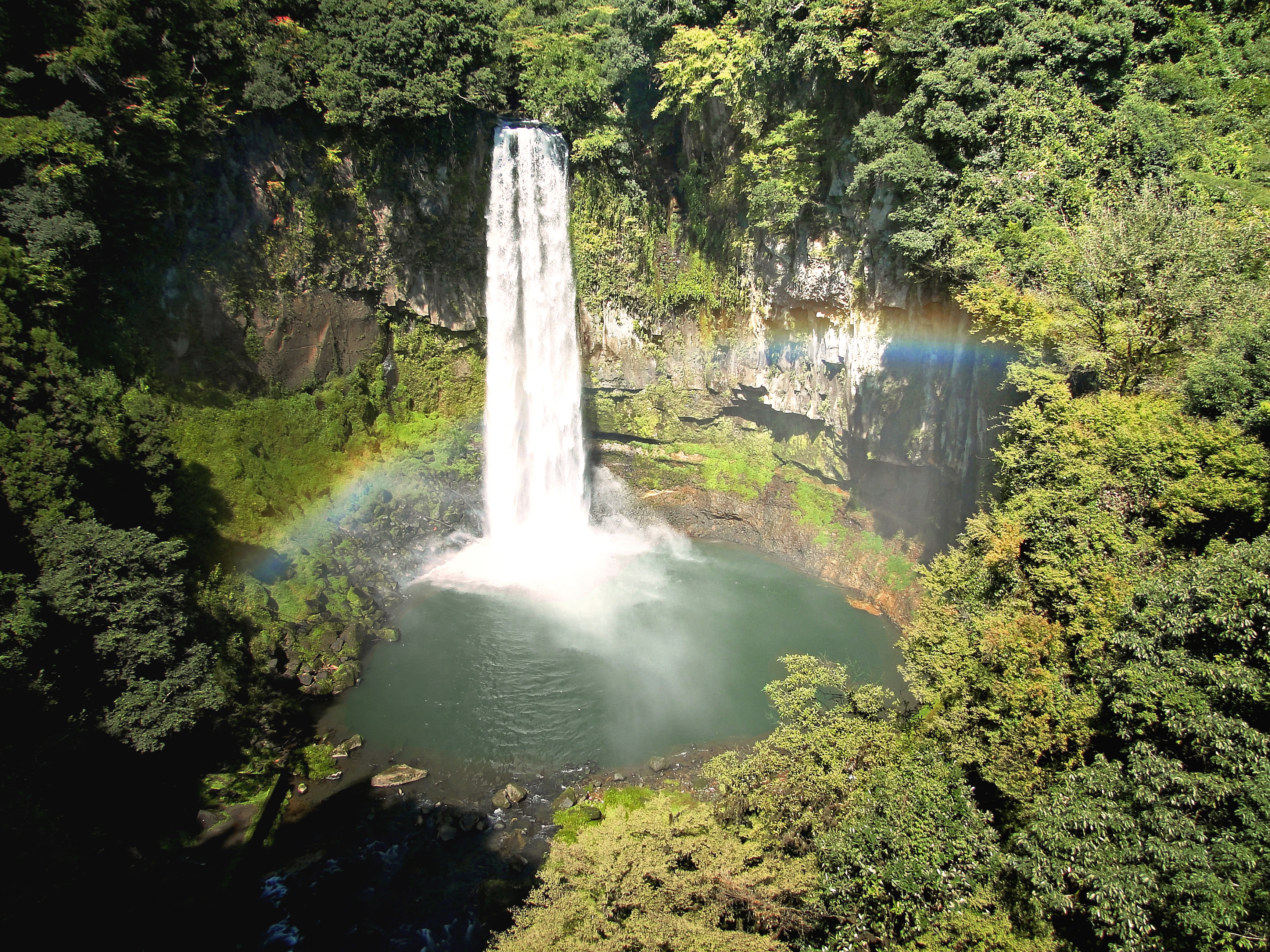It starts off as a dull roar, prompting those of us sitting in the rice paddies to look skyward in anticipation. Then it builds, in the same way an orchestra tunes its instruments: first discordantly out of key before reaching a crescendo of perfect pitch. At noon exactly, the water pours forth and the old Tsujunkyo aqueduct is alive once more.
To the untrained eye, it seems an odd place for a bridge. The large stone structure, built in the mid-19th century, spans a considerable valley, though the river that cuts through the area beneath the bridge is only 3 or 4 meters wide. But spanning the divide was not Tsujunkyo's true purpose.
Located in a rural corner of Kumamoto Prefecture, the Shiraito Plain suffered for years from crippling droughts and numerous failures of its rice crops, and in 1854, local village chief Yasunosuke Futa spearheaded the building of an aqueduct as a way to divert water to the area from the Sasahara River, a little more than 9 km away. The work took nearly two years to complete and involved more than 30,000 laborers and masons. Even today, more than 100 hectares of land on the Shiraito Plain benefit from the water that runs through the aqueduct system.



















With your current subscription plan you can comment on stories. However, before writing your first comment, please create a display name in the Profile section of your subscriber account page.